Showing posts with label amg. Show all posts
Showing posts with label amg. Show all posts
Monday, August 24, 2015
Daimler continues along its successful path in first quarter with record figures for unit sales, revenue and EBIT.
- Unit sales increase by 13% to 641,600 vehicles
- Revenue growth of 16% to €34.2 billion
- Group EBIT 63% above prior-year period at €2,906 million
- EBIT from ongoing business up by 41% to €2,930 million
- First quarter net profit almost doubles to prior-year to €2,050 million
- Free cash flow of the industrial business rises to €2.3 billion
- EBIT from ongoing business in 2015 expected to be significantly higher than in previous year
- Significant growth in unit sales and revenue anticipated for 2015
- Dr. Dieter Zetsche, Chairman of the Board of Management of Daimler AG and Head of Mercedes-Benz Cars: “We made a very good start to the year 2015 and continued along our successful path with record levels of unit sales, revenue and EBIT in the first quarter.”
- Bodo Uebber, Member of the Board of Management of Daimler AG for Finance & Controlling and Daimler Financial Services: “As a result of our substantial investment, we are profiting from a strong product portfolio. In combination with the systematic continuation of our efficiency measures, we will continue our profitable growth.”
Daimler AG (ticker symbol DAI) continued along its successful path with record levels of unit sales and revenue and significantly increased earnings in the first quarter of 2015.
With total sales of 641,600 cars and commercial vehicles worldwide in the first quarter, the Group sold 13% more vehicles than in the first quarter of last year. Mercedes-Benz Cars increased its sales by 18% to 459,700 vehicles, achieving its best-ever first quarter in terms of unit sales.
Group revenue in the first quarter of €34.2 billion was 16% above the figure for the prior-year period. Adjusted for the effects of exchange-rate changes, revenue growth amounted to 9%.
The Group achieved EBIT of €2,906 million (Q1 2014: €1,787 million). Due to the positive development of the biggest divisions, EBIT from the ongoing business also improved significantly to €2,930 million (Q1 2014: €2,072 million) by 41%. Net profit also rose by a substantial 89% to €2,050 million.
“We made a very good start to the year 2015 and continued along our successful path with record levels of unit sales, revenue and EBIT in the first quarter,” stated Dr. Dieter Zetsche, Chairman of the Board of Management of Daimler AG and Head of Mercedes-Benz Cars. “Our growth strategy, our product offensives and our efficiency programs are paying off.
We have already achieved a lot, we look to the future with great confidence, and we aim to achieve even more.”
Mercedes-Benz Cars primarily contributed to the increase in EBIT by 63%. The development of the division’s earnings was mainly the result of further growth in unit sales in all regions. Earnings increased also significantly at Daimler Trucks and Mercedes-Benz Vans.
Due to market conditions, Daimler Buses was unable to match its very high earnings of the prior-year period. Daimler Financial Services’ earnings increased primarily as a result of its higher contract volume. Changes in exchange rates had an overall positive impact on operating profit.
Furthermore, the special items shown in the table on page 10 affected EBIT in the first quarter of 2015 and 2014.
“As a result of our substantial investment, we are profiting from a strong product portfolio. In combination with the systematic continuation of our efficiency measures, we will continue our profitable growth,” summarized Bodo Uebber, Member of the Board of Management of Daimler AG for Finance & Controlling and Daimler Financial Services, with regard to the development in the first three months of the year. “We are on a very good path to meet our forecasts. At the same time, we will step-by-step approach our margin targets.”
The expense of €751 million entered under income-tax expense for the first quarter increased by €187 million compared with the first quarter of last year due to the substantial increase in profit before income taxes. Net profit almost doubled to €2,050 million (Q1 2014: €1,086 million).
Net profit of €87 million is attributable to non-controlling interests (Q1 2014: €59 million). Net profit attributable to the shareholders of Daimler AG amounts to €1,963 million (Q1 2014: €1,027 million); earnings per share increased to €1.83 (Q1 2014: €0.96).
Compared with December 31, 2014, the net liquidity of the industrial business increased from €17.0 billion to €20.5 billion. The increase mainly reflects the higher free cash flow of the industrial business of €2.3 billion and positive exchange-rate effects.
“We are very soundly financed and make use of attractive refinancing conditions around the globe. In China, we have issued our third panda bond this month. Our financial services continue to grow profitably, we are investing in the further development of the business model and we have historically low credit default rates,” stated Uebber.
At the end of the first quarter of 2015, Daimler had a total workforce of 283,541 employees worldwide (end of 2014: 279,972; end of Q1 2014: 276,322). 170,296 of them were employed in Germany (end of 2014: 168,909; end of Q1 2014: 167,746).
Unit sales by Mercedes-Benz Cars increased in the first quarter of 2015 by 18% to 459,700 vehicles. This made the first three months of this year the best first quarter for unit sales so far. The main growth driver in Western Europe was once again the United Kingdom with a plus of 17%; unit sales in Germany increased by 11%. The growth path continued also in the major markets of the United States (+14%) and China (+24%), as well as in Japan (+23%) and South Korea (+20%).
The division’s revenue increased by 15% to €19.5 billion and its EBIT of €1,841 million was significantly higher than the €1,183 million posted for the prior-year period. Return on sales amounted to 9.4% (Q1 2014: 7.0%).
The development of earnings primarily reflects the growth in unit sales in all regions. Strong contributions came from the new C-Class and the expanded range of compact cars. Mercedes-Benz Cars achieved earnings growth also as a result of better pricing. In addition, efficiency measures had a positive impact on EBIT.
However, the development of earnings featured a changed regional structure of unit sales, due for example to the higher proportion of cars produced locally in China.
Furthermore, earnings were affected by expenses for the enhancement of products’ attractiveness, capacity expansion, advance expenditure for new technologies and vehicles, and exchange-rate changes. Earnings also include one-time effects from relocating the headquarters of Mercedes-Benz USA, LLC and from the sale of real estate in the United States.
First-quarter unit sales by Daimler Trucks increased by 4% to 112,400 vehicles. The ongoing strength of the economy in the NAFTA region caused a further increase in demand for trucks there. With 40,800 vehicles sold, unit sales rose by 18% compared with the prior-year period. Unit sales of 11,500 trucks in Western Europe were slightly below the prior-year level (-2%); at the same time, Mercedes-Benz Trucks defended its market leadership in that region.
Demand for trucks in Latin America was significantly impacted by the continuation of difficult economic conditions. Sales of 7,200 trucks in that region were therefore significantly lower than in the prior-year period (Q1 2014: 10,200).
Unit sales in Asia were perceptibly lower than in the prior-year period, due in particular to the unexpectedly weak market development in Indonesia, where sales decreased to 10,000 vehicles (Q1 2014: 14,200). Also in Japan, sales of 12,300 units were below the prior-year level (Q1 2014: 13,400). The still young business in India continued along its growth path with a significant increase in unit sales to 3,600 vehicles (Q1 2014: 2,200).
Daimler Trucks achieved revenue of €8.4 billion (+18%). The division’s EBIT of €472 million was significantly above the prior-year level (Q1 2014: €341 million) and its return on sales was 5.6% (Q1 2014: 4.8%).
There were positive effects on the development of earnings in particular from increased unit sales in the NAFTA region and exchange-rate changes. The realization of further efficiencies had a positive impact on earnings. Negative effects on the earnings posted by Daimler Trucks resulted above all from lower unit sales in Latin America and Indonesia, higher warranty costs and expenditure for capacity expansion.
In addition, there were expenses from the measurement at fair value of Atlantis Foundries (Pty.) Ltd., the sale of which was decided upon in late February. EBIT was reduced also by workforce actions in the context of the ongoing optimization program in Brazil.
Mercedes-Benz Vans increased its unit sales by 4% to 63,800 vehicles in the first quarter of 2015. The growth drivers were the core region of Western Europe with a significant increase to 41,700 units, especially Germany (+15%), as well as Eastern Europe (+16%). In the United States, the successful development continued with a plus of 24% to 6,200 vehicles sold.
Revenue grew compared with the first quarter of last year by €0.2 billion to €2.4 billion. The division achieved an operating profit of €215 million (Q1 2014: €123 million). The division’s return on sales increased to 8.9% from 5.6% in the prior-year period. Mercedes-Benz Vans’ revenue and earnings were influenced by a very positive product mix in the first quarter.
This was additionally driven by the good development of demand in Europe and the NAFTA region, as well as by improved efficiency. There were negative effects on the development of earnings from changes in exchange rates.
Sales by Daimler Buses of 5,700 buses and bus chassis in the first quarter of 2015 were significantly below the unusually high prior-year number of 6,700 units. The decrease in unit sales was mainly caused by the weaker business with bus chassis in Latin America, which was not offset by the continued good demand for complete buses in Western Europe and Turkey.
Due to the stronger increase in sales of complete buses, revenue of €877 million was slightly higher than in the exceptional high prior-year period (Q1 2014: €859 million). EBIT amounted to €34 million, but was below the very high prior-year level of €53 million, due to market conditions. The division’s return on sales was 3.9% (Q1 2014: 6.2%).
Earnings were significantly reduced by the difficult economic situation in Brazil and the resulting decrease in demand for bus chassis. High demand for complete buses, a positive product mix in Western Europe and positive exchange-rate effects partially offset the lower unit sales in Latin America.
The earnings of all automotive divisions were also affected by the restructuring of the Group’s own sales organization in Germany.
Daimler Financial Services concluded approximately 342,000 new leasing and financing agreements in the first quarter (+19%); its new business thus increased compared with the prior-year period by 34% to €13.2 billion. Contract volume at the end of the first quarter exceeded the mark of €100 billion for the first time and reached €108.7 billion. Compared with year-end 2014, there was growth of 10%. Adjusted for exchange-rate effects, contract volume increased by 3%.
In the first quarter of 2015, the division achieved earnings of €409 million and thus surpassed the prior-year figure (Q1 2014: €397 million). This was mainly the result of growth in contract volume in all regions, as well as positive exchange-rate effects. There were opposing effects from expenditure for the expansion of business activities.
The reconciliation of the divisions’ EBIT to Group EBIT comprises gains and/or losses at the corporate level and the effects on earnings of eliminating intra-group transactions between the divisions. Other items at the corporate level resulted in an expense of €80 million (Q1 2014: €314 million).
The first quarter of 2014 included an expense of €161 million from hedging the price of Tesla shares and an expense of €118 million from exercising the put option on the shares held in Rolls-Royce Power Systems Holding (RRPSH). The elimination of intra-group transactions resulted in income of €15 million in the first quarter of 2015 (Q1 2014: €4 million).
In the first quarter of 2015, a total of €1.0 billion was invested for new products and technologies, the expansion of production capacities and modernization, primarily at the production and assembly sites. In addition, research and development expenditure totaled €1.5 billion. In 2015 and 2016, the Group plans to invest a total of approximately €25 billion in property, plant and equipment as well as research and development projects.
At the beginning of the second quarter, there are still good prospects that the world economy will continue its expansion. But in view of the substantial decrease in the price of crude oil, the ongoing supportive monetary-policy actions by major central banks and very low inflation rates, the momentum of the world economy remains rather moderate, with an expected growth rate of just under 3%.
In line with the continuation of moderate economic dynamism, worldwide demand for cars is expected to increase by about 3% in 2015. Demand in China, the world’s biggest car market, should grow again significantly and make by far the biggest contribution to global growth. The US market should also show a solid development and reach a volume of 17 million vehicles.
In Western Europe, an ongoing demand revival is to be expected, whereby the initial situation of the individual markets continues to differ significantly. In the German car market, moderate expansion and total sales of just over three million units are anticipated. The Japanese market has been at an artificially high level for several years as a result of various special effects. For the year 2015, a correction is therefore expected with a lower level of demand.
The picture for the major emerging markets excluding China remains varied in 2015. A recovery of demand for cars is anticipated in India. In Russia, however, a drastic fall in car sales must be assumed due to the country’s severe economic crisis.
In the worldwide market for medium- and heavy-duty trucks, another drop in demand is expected in 2015 following last year’s significant decrease. Furthermore, the situation will remain varied from one region to another. The NAFTA region once again promises to have the most positive development. The main economic indicators there suggest that the truck market will remain favorable with demand likely to increase by 10-15%.
The economic prospects for the European market have brightened since the beginning of the year, so Daimler now anticipates market growth of 5-10%. Market conditions in Brazil have deteriorated significantly once again. Starting from a low level, it must now be assumed that demand will fall again substantially by approximately 30%.
The Japanese market for light-, medium- and heavy-duty trucks appears to be relatively robust despite the sluggish economy, so market volume in 2015 is expected to be in the magnitude of the previous year. But following a very weak start to the year in Indonesia, it must be assumed that demand will be about 20% lower than in 2014. The deep recession in Russia will continue to affect the market, so demand is likely to fall strongly once again.
But a significant market recovery is anticipated in India, thanks to slightly improved economic prospects there.
Demand for trucks in China is currently under pressure due to the introduction of the CN4 emissions standards (similar to Euro IV). Daimler therefore expects the market to contract significantly compared with last year.
The Group assumes that the markets in Europe for both medium-sized and large vans as well as for small vans will grow slightly in 2015. Significant growth is anticipated in the market for large vans in the United States. Daimler expects significant contraction in the market for large vans in Latin America, and assumes that demand in the market the Group addresses in China will remain at the prior-year level.
For buses, Daimler expects a market volume in Europe that is slightly above the very low level of 2014. In Brazil, demand for buses is likely to decrease again significantly this year.
On the basis of the divisions’ planning, Daimler expects its total unit sales to increase significantly in 2015.
Mercedes-Benz Cars is continuing last year’s success in 2015 and is further strengthening its market position. After its best-ever first quarter, the division intends to achieve significant growth in unit sales once again in full-year 2015, thus setting a new record.
Major contributions will come from the C-Class sedan and wagon models. As the year progresses, the product offensive will be continued, thus creating impetus for additional growth. A total of eight new or upgraded car models will be launched in 2015. This started with the Mercedes-Maybach S-Class in February, the first product of the new sub-brand.
It was followed in March by the Mercedes-AMG GT and the CLA Shooting Brake, which complements the successful family of compact cars with its unique design. The focus in the second half of the year will be on the new SUV models as important growth drivers. In July, there will be the launch of the new GLE coupe, which already had its world premiere in Detroit this January. Four more models will come onto the market by the end of the year, including two SUVs.
With these vehicles, Mercedes-Benz will meet the still-rising demand for premium SUVs, thus facilitating further growth. The two smart models will also contribute to a significant increase in unit sales; they will be available in all key markets this year and can also be ordered with the twinamic double-clutch transmission.
Daimler Trucks anticipates a significant increase in unit sales in the year 2015. In Western Europe, growing investment activity should be accompanied by rising demand for trucks to replace older models. Unit sales in this region should therefore be higher than in the previous year. In Turkey, the division anticipates a significant number of purchases being brought forward to the year 2015 because of the coming introduction of Euro VI emission standards in 2016. The economic situation in Brazil has further exacerbated in recent months.
The political situation and unfavorable financing conditions are crippling investment activity, so significant falls in unit sales must be anticipated. For the NAFTA region, Daimler Trucks assumes that its unit sales will once again significantly surpass the prior-year figure, in line with the expected market development. The new and successful products should safeguard the division’s market leadership in this region.
In Asia, unit sales are anticipated at about the same level as in 2014. The further expansion of the dealer network should allow significant growth in unit sales in India.
Furthermore, the expanded range of FUSO vehicles from Chennai should stimulate additional sales growth outside India. Daimler Trucks does not yet expect a reversal of the weaker market trend in Indonesia for full-year 2015. In Japan, the division assumes that unit sales will be of the same magnitude as the high prior-year level.
Mercedes-Benz Vans plans to achieve significant growth in unit sales in 2015. Above all in Europe, the core market, the van division anticipates significant increases in sales of medium-sized and large vans.
This development is likely to be primarily driven by the new Vito for commercial use and the V-Class multipurpose vehicle for private use. Both those models are now fully available following their launch in 2014.
In the context of the Mercedes-Benz Vans goes global strategy for the division, the Vito will be launched also in North and South America this year, stimulating additional demand there. Mercedes-Benz Vans aims to achieve further growth in those markets also with the Sprinter, which will additionally be produced in North America in the future.
Daimler Buses assumes that it will be able to defend its market leadership in its core markets for buses above 8 tons with innovative and high-quality new products. The bus division now expects its total unit sales to decrease significantly in 2015. A substantial decrease is anticipated in Latin America, accompanied by a stable development in Europe and rising unit sales in Mexico.
Daimler Financial Services anticipates significant growth in both new business and contract volume in the year 2015. This will result from the growth offensives of the automotive divisions, the specific targeting of younger customers, the expansion of business especially in Asia, and the further development of online sales channels. The range of mobility services will also be systematically expanded.
Daimler assumes that Group revenue will increase significantly in 2015. In regional terms, the strongest growth is anticipated in Asia and North America, but business volumes should expand also in the other regions.
On the basis of the anticipated market development and the planning of the divisions, Daimler assumes that EBIT from the ongoing business will increase significantly in 2015.
For the individual divisions, the Group aims to achieve the following EBIT targets from the ongoing business in full-year 2015:
- Mercedes-Benz Cars: significantly above the prior-year level,
- Daimler Trucks: significantly above the prior-year level,
- Mercedes-Benz Vans: significantly above the prior-year level,
- Daimler Buses: significantly below the prior-year level, and
- Daimler Financial Services: slightly above the prior-year level.
The anticipated development of earnings in the automotive divisions will have a positive impact on the free cash flow of the industrial business in 2015.
When comparing with 2014, it is necessary to consider that the free cash flow from the industrial business in that year was influenced by the sale of Daimler’s shares in RRPSH and Tesla, as well as by the extraordinary contribution to the German pension plan assets and the settlement of a healthcare plan in North America.
In the year 2015, Daimler expects a free cash flow from the industrial business in a significantly higher amount than the dividend payment in 2015 of €2.6 billion.
As investment in property, plant and equipment will increase again slightly and research and development spending will rise significantly, the Group assumes, however, that the free cash flow of the industrial business will be significantly lower than in 2014 (€5.5 billion). “Against the backdrop of the development in the first quarter, from today’s perspective, we are aiming for the upper end of this bandwidth,” stated Board of Management Member for Finance Uebber.
Due to the generally very favorable business development that is expected for 2015, production volumes will continue rising. At the same time, the efficiency-enhancing measures that have been implemented at all divisions in recent years will now take full effect. The medium- and long-term programs for structural improvements of business processes should facilitate further efficiency progress. Daimler therefore assumes that the size of the Group’sworkforce will increase only slightly.
2016 Mercedes-Benz G-Class Gets New Engines, Suspension And Cosmetic Upgrades

Mercedes refuses to let go of its rugged G-Class series that enters the new model year with a host of revisions, including the addition of a new twin-turbo V8.
Read more »
Mercedes-Benz S65 AMG
V12 / 5.980 cc / 630 PS / 737 ft/lb (1.000 Nm) @ 2.300 - 4.300 / twin turbo / 0 - 62 mph (100 km/h): 4,3 s / Vmax: 155 - 186 mph (250 - 300 km/h)
(click images for a larger view)
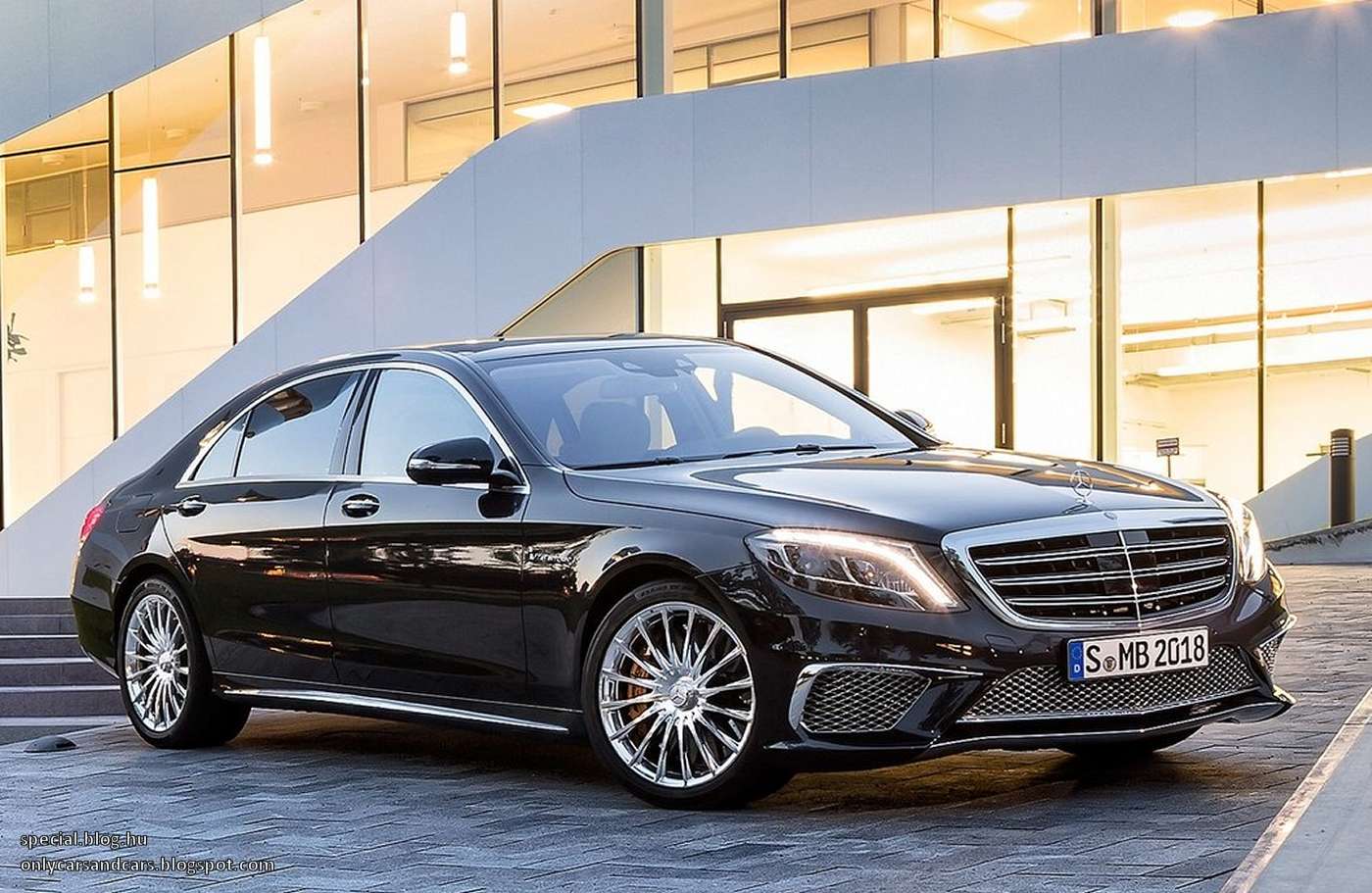
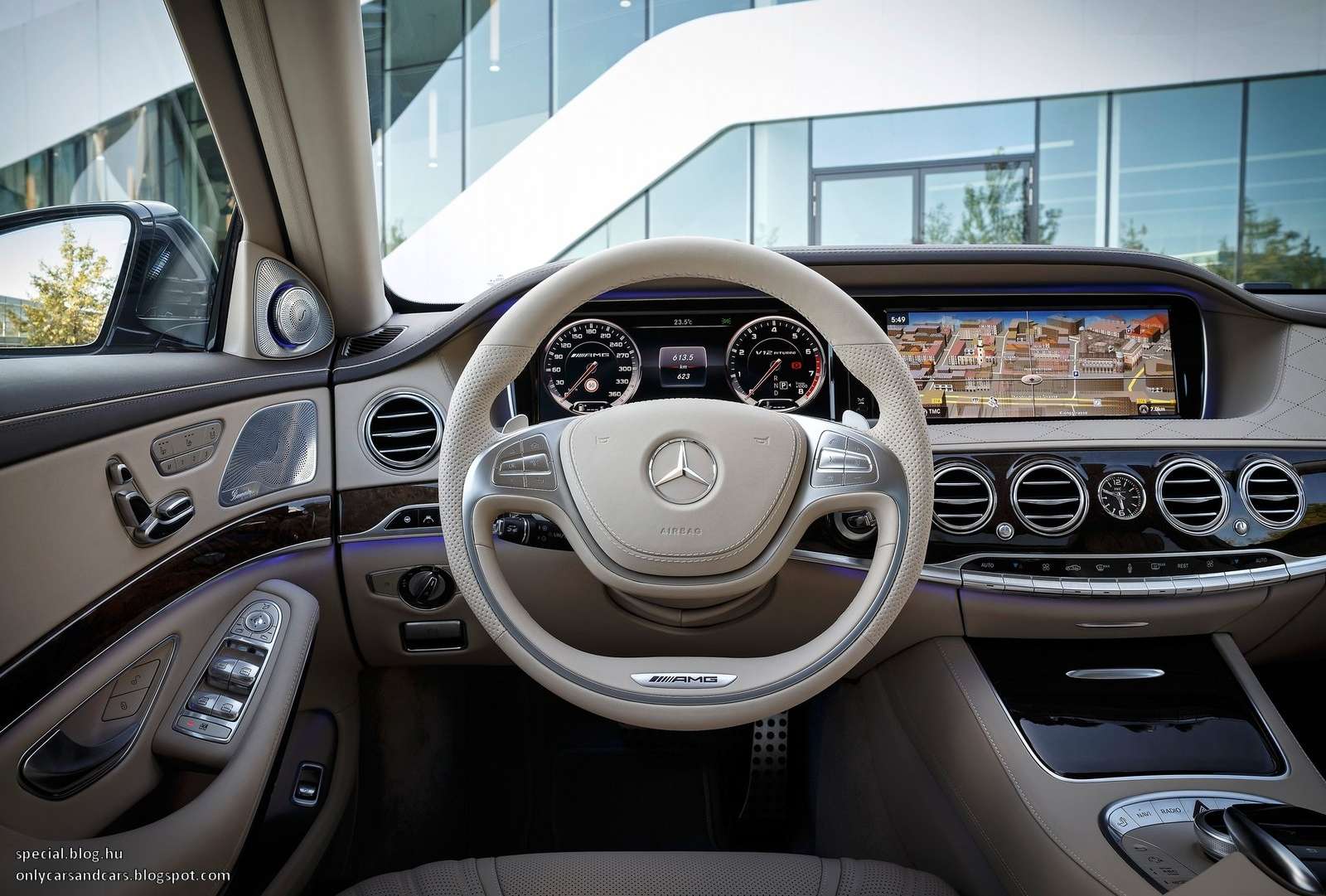
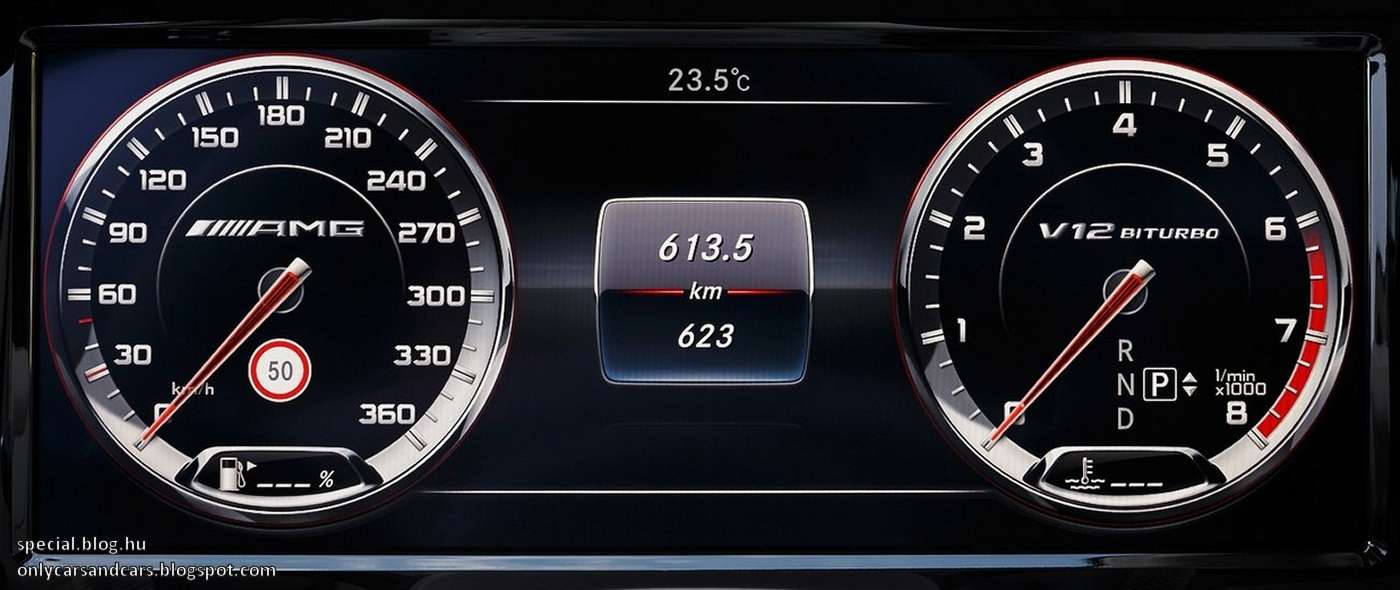
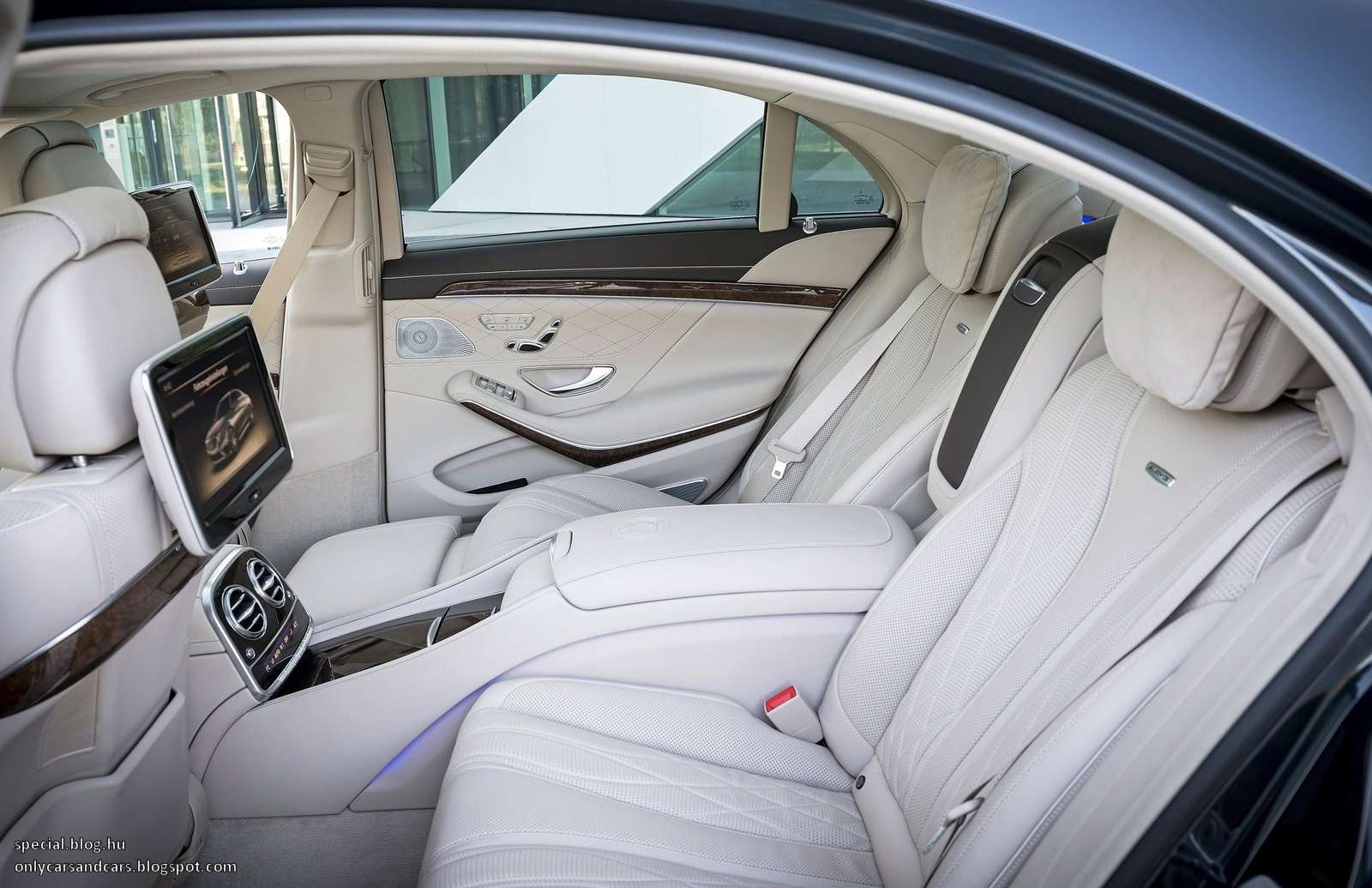
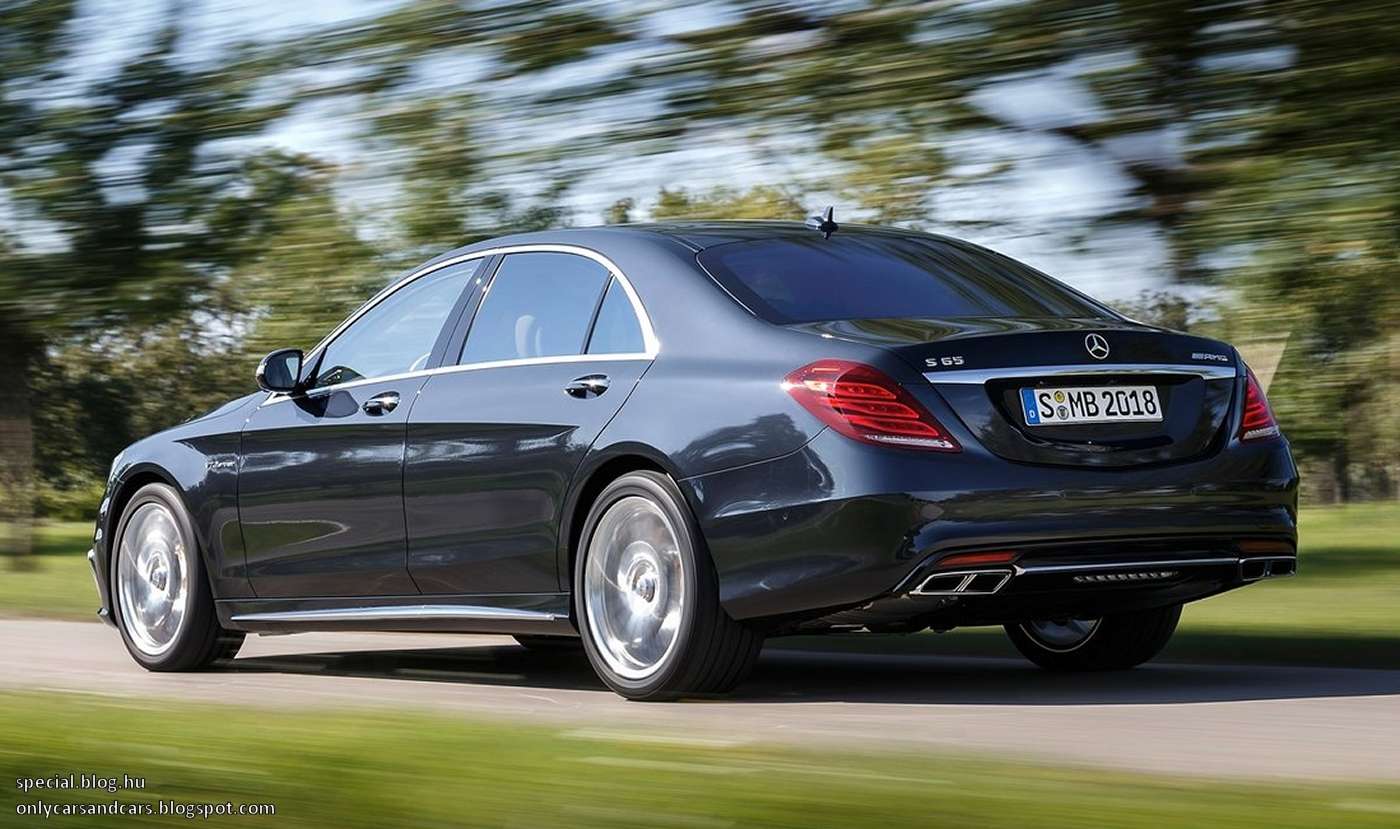
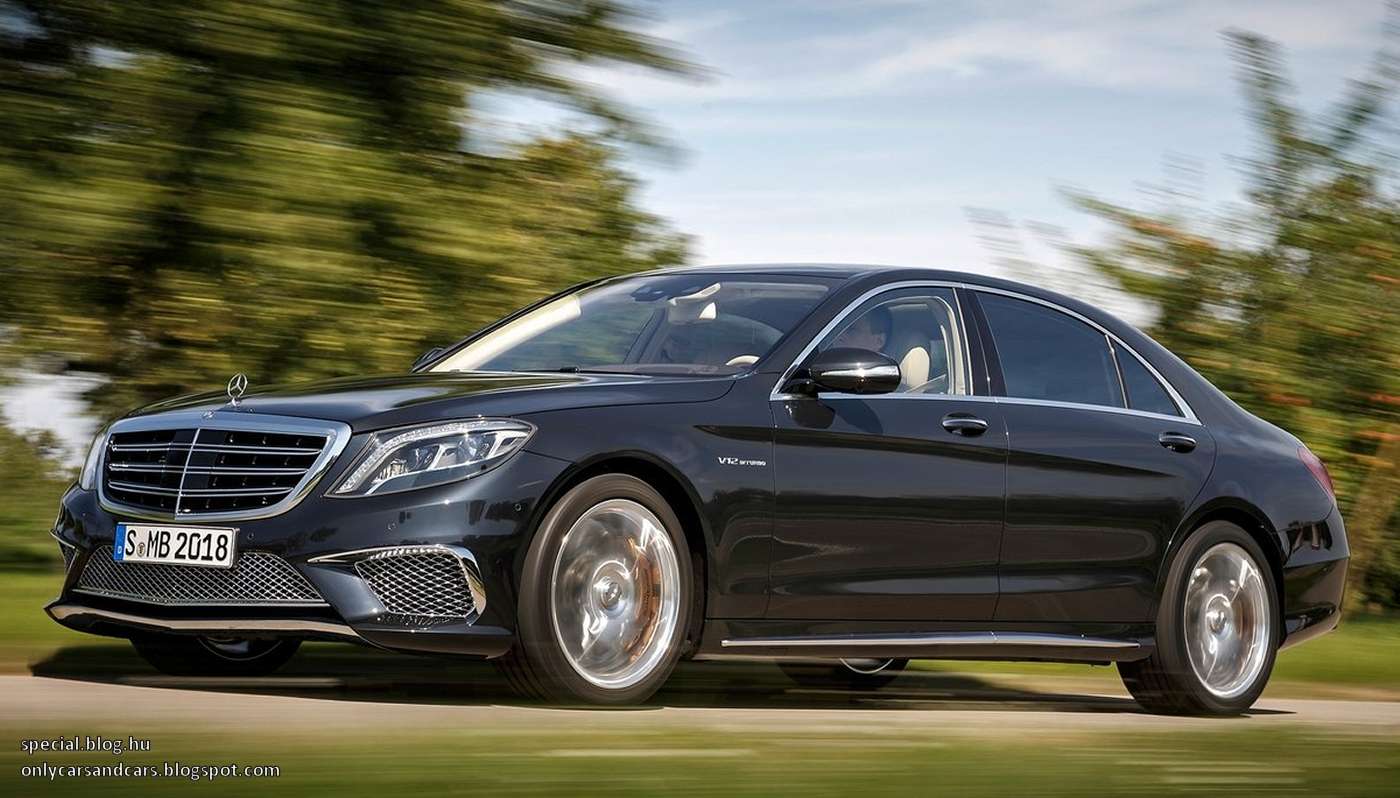


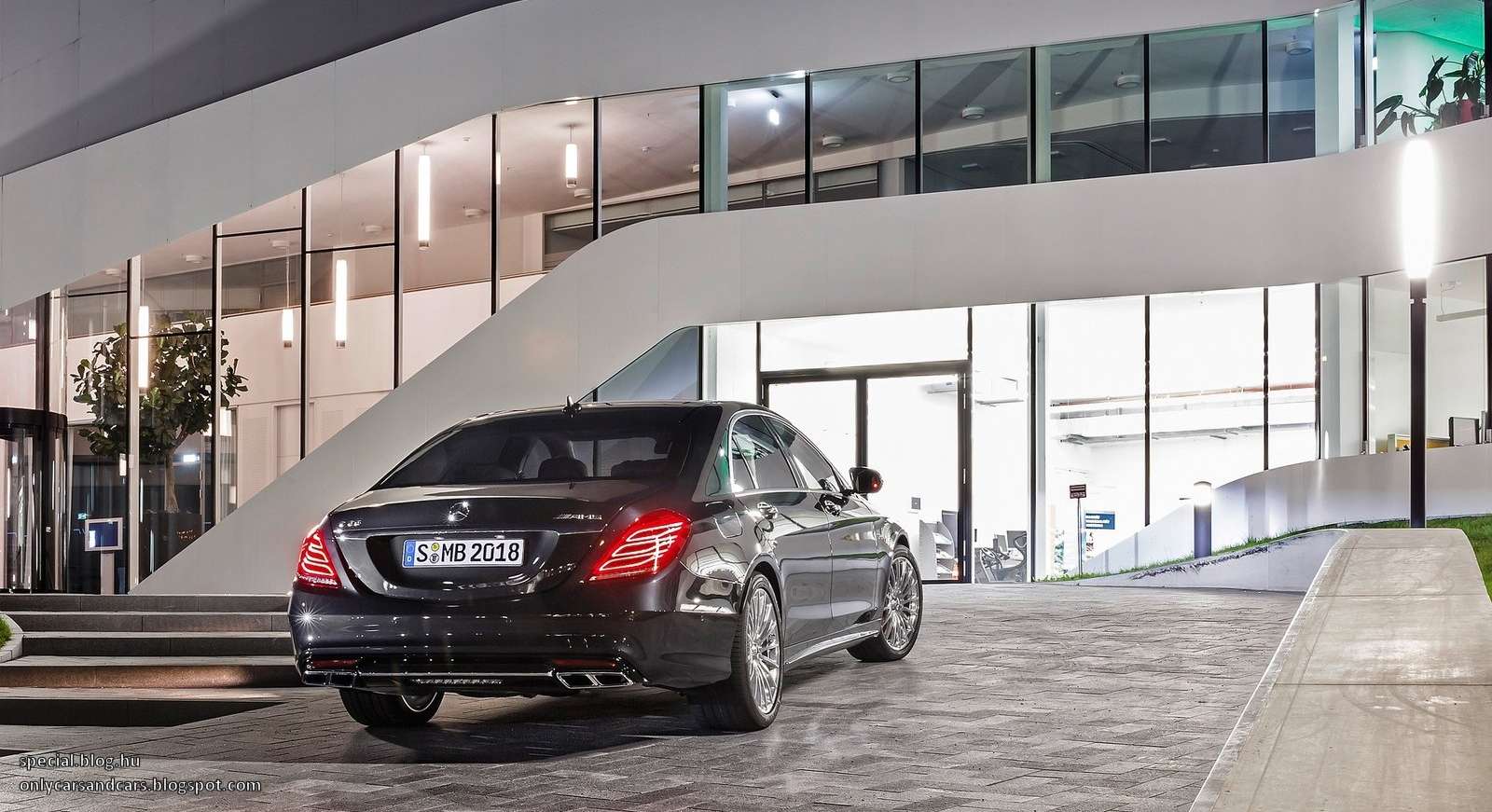
Read more »
(click images for a larger view)









Subscribe to:
Posts (Atom)









